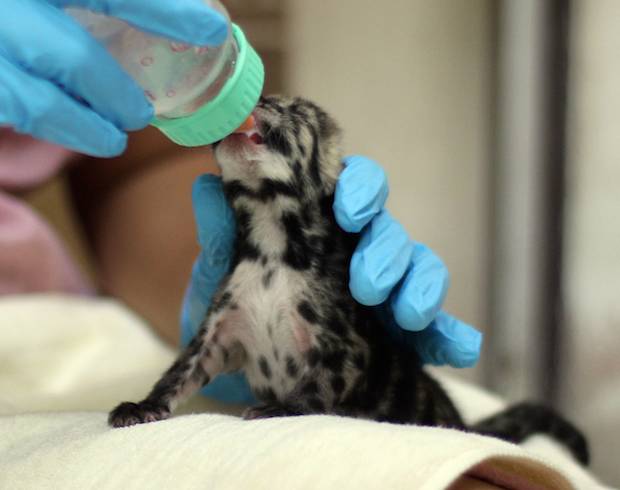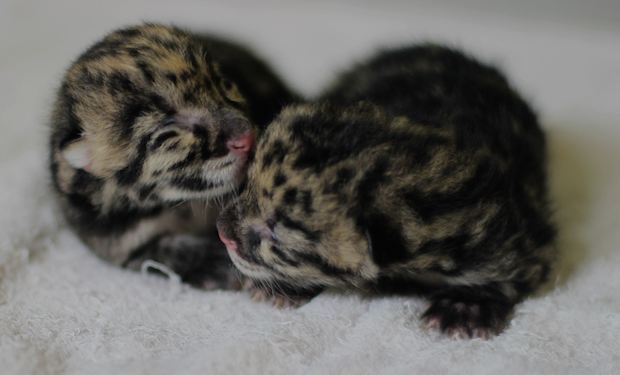Rare clouded leopard cubs provide hope for threatened species
For only the second time, a litter of clouded leopards has been born using artificial insemination.
The two cubs were born at the Khao Khew Open Zoo in Chonburi, Thailand June 9. It was the first time the procedure has been performed on a clouded leopard outside of the United States. The first and only other successful artificial insemination in a clouded leopard was performed in 1992.
"The birth of these two cubs is a major step forward," said Pierre Comizzoli, a reproductive physiologist at the Smithsonian Conservation Biology Institute (SCBI), who performed the procedure alongside Thai scientists Paweena Thuwanut and Wanlaya Tipkantha. "Clouded leopards have been incredibly challenging for us to breed, but this new technique means we have another tool to help keep the population genetically healthy and growing."
Both cubs appear to be healthy and are doing well. Keepers at Khao Khew Open Zoo are hand raising the cubs, which improves their chances of survival. The first images of the cubs show them being fed with a bottle, curled up asleep or snuggling up together.
Clouded leopards are listed as vulnerable in the wild by the International Union for Conservation of Nature.
It is estimated that there are only about 10,000 of these elusive cats left in the wild across Southeast Asia and China. Weighing twice that of a house cat with fur that ranges from pale yellow to brown with dark, cloud-like markings, these cats face a range of threats including habitat fragmentation, deforestation and illegal wildlife trafficking.
The Clouded Leopard Consortium, which includes SCBI and Khao Khew Open Zoo, is among those working to build a sustainable population in captivity and studying wild populations in Southeast Asia. Breeding clouded leopards in captivity has been difficult, partly due to aggression between males and females. When first introduced for breeding purposes, males have been known to kill females. The aggression is less if they are raised together from a young age but that isn't always possible.
Artificial insemination, which has been used successfully with pandas, orangutans and other animals, is among the alternative tools used to increase the captive population.
In this case, scientists used a new technique on a leopard named Gra Ding, after several attempts to use classic methods failed. They deposited fresh semen from two different males in low doses into her oviducts. The doses totaled between 5 and 8 million sperm cells in each oviduct. Typical methods require at least 100 million sperm cells to be deposited using intrauterine insemination through laparoscopy.
Scientists will use paternity tests to determine which male sired the cubs. It is possible the cubs have different fathers.
Gra Ding was chosen because she was not a successful natural breeder but is genetically valuable. The two males the semen samples were collected from were identified as good genetic matches for Gra Ding.

